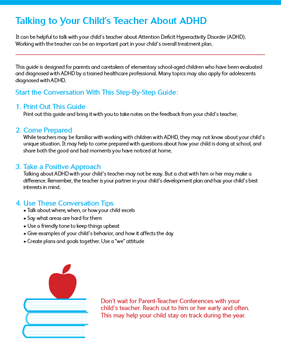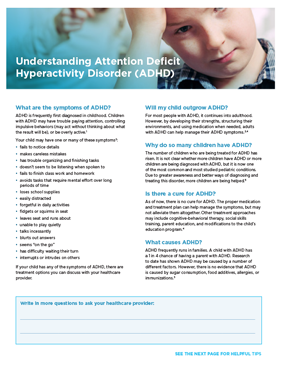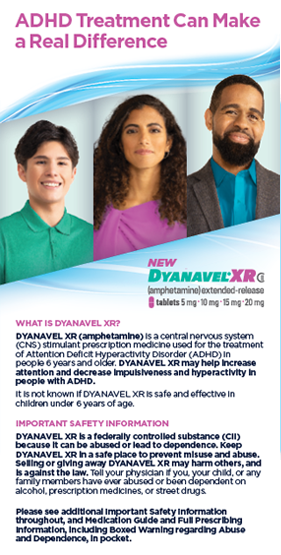Below you will find tools to help you calculate dosing for your patients, as well as reconstitution and dispensing information that pharmacists may find useful. There are also several resources and links for you to share with patients, parents, and caregivers to help them access information about ADHD, ADHD support programs, and Tris Pharma products.
Dosing Calculators



Information for Pharmacists
Dispensing
DYANAVEL XR (amphetamine) tablet is available in a 5-mg scored tablet and 10-, 15-, and 20-mg unscored tablets that can be taken with or without food. For full pharmacist instructions for dispensing and storage, see Full Prescribing Information for DYANAVEL XR.

Dispensing
DYANAVEL XR (amphetamine) oral suspension is supplied as a light-beige-to-tan viscous oral suspension. DYANAVEL XR oral suspension is already flavored; DO NOT add any flavoring. For full pharmacist instructions for reconstitution, preparation, dispensing, and storage, see Full Prescribing Information for DYANAVEL XR.

Reconstituting and dispensing
Quillivant XR (methylphenidate HCl) is supplied as a powder for oral suspension and MUST be reconstituted with water prior to dispensing. Quillivant XR is already flavored; DO NOT add any flavoring. For full pharmacist instructions for reconstitution, preparation, dispensing, and storage, see Full Prescribing Information for Quillivant XR.

Dispensing
QuilliChew ER (methylphenidate HCl) is available in 20-mg scored, 30-mg scored, and 40-mg unscored tablets that can be taken with or without food. For full pharmacist instructions for dispensing and storage, see Full Prescribing Information for QuilliChew ER.

Co-pay Offers
Help your patients save on Tris ADHD products.
ADHD Resources to Download
Pediatric patients and caregivers
Download this practical guide to help your patients taking a Tris ADHD medication track their symptoms and improvements.
Download this useful guide to help parents and caregivers of elementary school–aged children with ADHD discuss with teachers:
- Classroom management techniques for students with ADHD
- How to motivate students with ADHD to learn
- School accommodations for ADHD
Download this educational guide to provide parents and caregivers with information about how to best address their child’s individual needs, including parenting techniques for ADHD and answers to questions they may have about ADHD, such as:
- What does ADHD stand for?
- What causes ADHD?
- Can ADHD go away?
Adult patients
Download this guide for your patients so that they can learn more about ADHD, DYANAVEL XR tablet, support, and resources.
ADHD Community Resources
Healthy Children is the official American Academy of Pediatrics (AAP) website for parents, hosting a variety of articles that address common questions and issues in diagnosing and treating ADHD in children. Search for ADHD at healthychildren.org for information about topics like:
- ADHD symptoms
- ADHD and screen time
- How to discipline a child with ADHD
- Treatment goals for ADHD
The Attention Deficit Disorder Association (ADDA) is the world’s leading adult ADHD association, dedicated to helping adults with ADHD lead better lives. Visit add.org to learn more about:
- ADHD impulse control techniques
- Patient self-screening with an adult ADHD quiz
- ADHD awareness month and other awareness events and advocacy programs
Online magazine for caregivers of children with attention deficit disorders. Visit additudemag.com to learn more.
Children and Adults with Attention-Deficit/Hyperactivity Disorder (CHADD) is a nationally recognized nonprofit organization providing education, advocacy, and support for individuals with ADHD. Visit chadd.org
The Centers for Disease Control and Prevention (CDC) has published facts, research, statistics, and a wide array of other tools for parents to educate themselves about ADHD. Visit cdc.gov/ncbddd/adhd to learn more.
The National Institute of Mental Health (NIMH), a component of the US Department of Health and Human Services, provides in-depth information and resources on ADHD diagnosis and treatment at nimh.nih.gov.
Pharmacy Locator
To find a nearby pharmacy with Tris ADHD products in stock, search pharmacies by ZIP code below.
Sign up to receive additional information and product updates, or to request a representative.
ADHD, Attention Deficit Hyperactivity Disorder; CNS, central nervous system.






